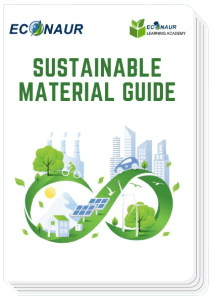Reality about the Pollutants in composting, Myths and Facts!
The commercial success in the era where we have to take serious steps towards safeguarding environment is taking wrong twist and turns. The recent awareness about composting the organic waste in decentralized manner has picked up the momentum. As a hungry commercial monster human being is also defying the process of natural composting by accelerating it. We want to have compost in 48 hours, 24 hours and I just now read in one of the brochure claiming 15 minutes.

We don’t think twice while wasting and throwing the valuable food along with food waste. But while taking efforts to bring it back in circular economy of sustainability we want to be God of Gods.

In the wake of government orders and notifications of managing wet wastes by commercial complexes and residential societies at local level in decentralized manner some of the commercially eccentric product manufacturers are spreading claims of creating compost in as low as 15 minutes time. Machines rating 1.8kW till 200kW to convert waste to compost in such a short time. And what they claim is following
- The organic waste is segregated
- Segregated waste is shredded to small size
- The shredded pile is then forcibly dried using electrical or oil heaters.
- The dried powder is said to be ready to use compost or some suggest then to keep it for curing for another 20 days with bacteria.

Now try to analyse above steps this way –
- The organic waste is segregated
This is a right step and must be done manually at source itself by the user or the person who is dumping it in the garbage bin.
- Segregated waste is shredded to small size
This is a step to accelerate the process of decomposition and can be used to help reduce overall size of waste also in terms of storage capacity.
- The shredded pile is then forcibly dried using electrical or oil heaters.
- The overall shredding process will make the waste a lot wet as the water in the matter is now out of the body so there will be leachate with highly acidic form and bad odor.
- 70-80% of organic waste is water which has to be dried now.

- Assume following –
Q – is the energy require to raise 1 Celsius of 1 kg o substance
c – is the specific heat of a substance
m – is the mass of the substance
θ – is the difference of temperature of a substance ( temperature of a substance after energy is absorb – temperature of a substance before energy is absorb)
We want to find Q so, the specific heat of water is 4.2 J/kgC-1 . I assume that the mass of the water is 1 kg coming out of the waste. The temperature difference in order to evaporate water is about 70°C (100°C – 30°C assume that room temperature is 30C) we substitute all in the equation –
Q = (4.2*103 J/kgC^-1) (1 kg) (70°C) = 294000 J
So 294000 joules of energy is require to evaporate 1 kg of water, which is about 0.09kWh energy per kg of water

The survey on net shows India produces over 60 million metric tons of waste a year out of which over 60% is organic waste. Currently only 9% of this waste is treated at source, the rest ends up choking landfills and our cities.
This means 32760000000kg of organic waste remains to be treated
Assume only 30% of this is treated for composting using such forced drying machines = 9828000000kg and this will require (9828000000kg*70%) of water*0.09kWh = 619164000kWh of electrical or fuel energy. Hopes this helps:) to know cost of energy and load of energy in converting wet waste to compost.
There is an alternative way of such decentralized composting

The other problem in the heating to dry the organic waste is even though the temperatures are lesser than burning temperatures the localized heat accumulation and low temperature exposure for extended time will tend to partially burn the organic matter.
Such reaction at lower temperatures have a very harmful ratios of CO-CO2 and Nox gases. (Reference: Pollutant Formation in Combustion Processes, Grzegorz Wielgosiński, Technical University of Lodz, Faculty of Process and Environmental Engineering, Poland)
While this partial drying / burning we are losing the nutrient value of the end compost.
The dried powder is said to be ready to use compost or some suggest then to keep it for curing for another 20 days with bacteria.
The dried powder is not a compost it is just forced stage of organic matter. Such dried powder is very hygroscopic. It will quickly absorb moisture from air and soil and again get into non-composted organic form.

Which will now rotten in the open soil. This is also a good food of flies and insects hence they breed in this form of powder when wet. This will start smelling foul as it becomes wet again.
It will take another 8-10 days minimum in open natural environment to get to a form where the plantation can absorb anything out of it.Improperly disposed organic waste is a major contributor to global greenhouse gas emissions, at almost 1500 Tg CO2 / year. Waste deposited, partially burnt emits methane which contributes 21 times the global warming impact of carbon dioxide according to the concept of Global Warming Potential adopted by the UN Framework Convention on Climate Change (UNFCCC).
The composting has to be self driven acted by assisted by the bacterial culture. The bacteria will chemically break down the waste in desired form by digesting some part as food for themselves. While such digestion the bacterias will generate a good temperature on their bodies which will dry out the waste naturally to the extent that some times you have to add some water to keep the bacteria’s active.
The process only demands small area in your garden or parking or terrace and a manpower for a size of 100 homes or equivalent waste processing setup.
Reference:
https://www.intechopen.com/books/advances-in-chemical-engineering/pollutants-formation-in-combustion-processes
https://web.extension.illinois.edu/homecompost/science.cfm
Sustainable & Organic Solutions
- AIROXY – WATER SAVING SHOWER HEAD – AIROXY – WATER SAVING SHOWER HEAD (BLACK / BLUE), This water saving shower head can mix air with water to spray water effectively to maintain equivalent water pressure compared to regular shower heads.


- Dual Thread Aerator:- With 3 LPM straight shower flow aerator you save water and reduce water bill.
- Leave It Pot Small Composter:- Perfect for people who have space & do not like lifting weights! Also a companion pot for your Kambha in case you are generating more than 1 kg waste per day.









